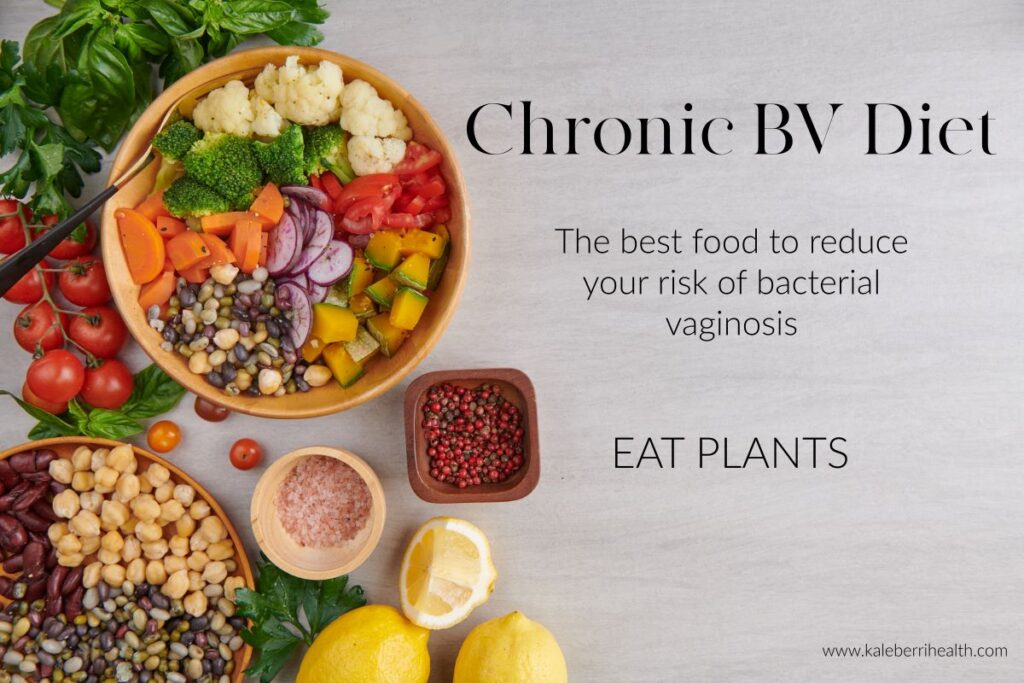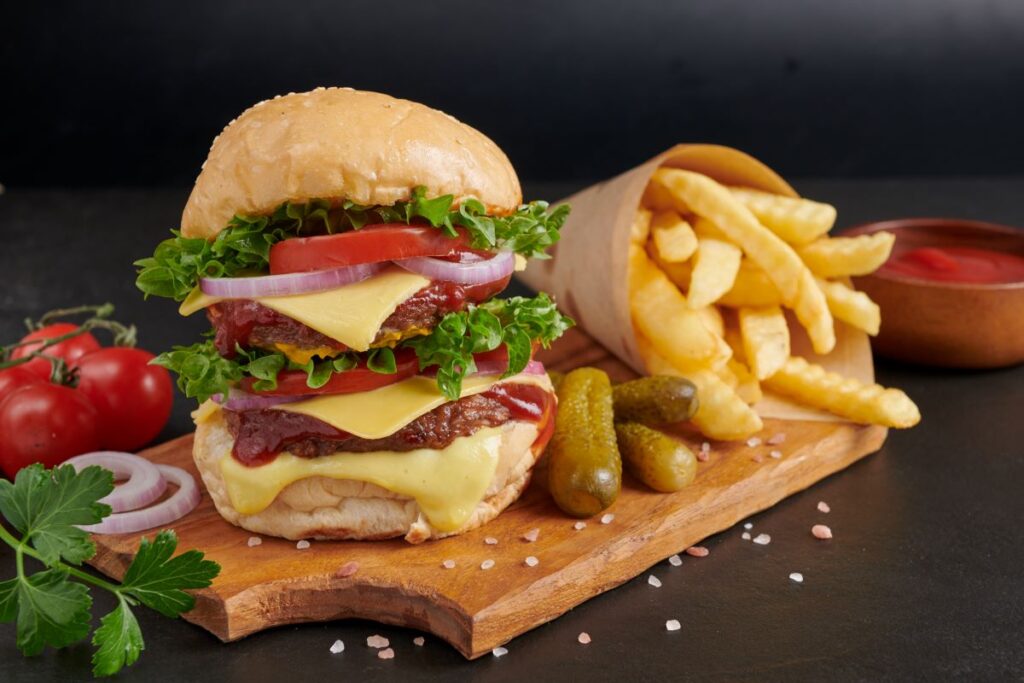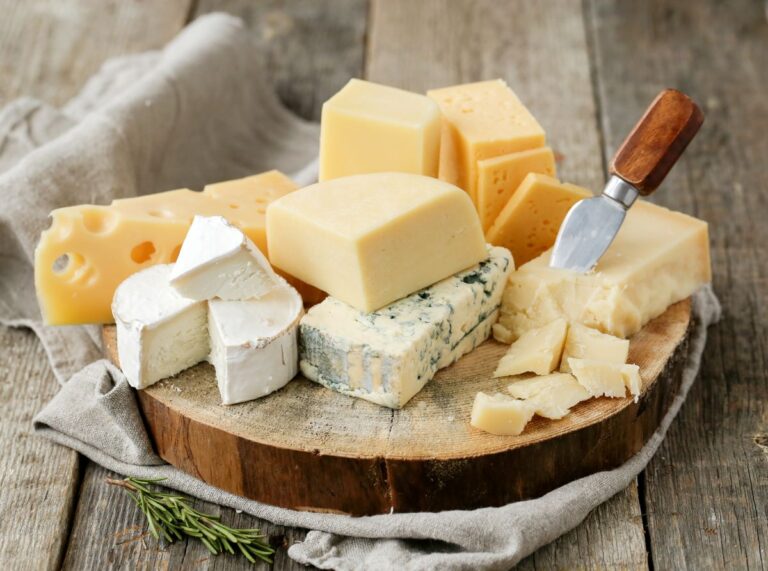Chronic BV Diet: How to get rid of bacterial vaginosis
Discover which types of food makes the best chronic BV diet to prevent and treat bacterial vaginosis. Bacterial vaginosis is influenced by the vaginal bacteria, the pH, the immune system and these are influenced by the food you eat. Find out which foods reduce the risk of BV and those that increase it, and increase severe and hard to treat bacterial vaginosis.
Contents
The BV basics: What is bacterial vaginosis?
Bacterial vaginosis (BV) is the most common vaginal infection in women of childbearing age. It is caused by an imbalance of vaginal bacteria. Women with BV have less Lactobacillus species which is helpful in keeping the BV-associated bacteria such as Gardnerella vaginalis at low levels.
BV is usually a mild infection, but it can cause serious complications for reproductive health if it is not treated such as miscarriage, premature birth and early IVF loss. It is also a cause of pelvic inflammatory disease. BV can also co-exist with other vaginal dysbiosis conditions such as vaginal yeast infections.

What are the symptoms of bacterial vaginosis?
The symptoms of bacterial vaginosis include:
- vaginal discharge which can be yellow/green or grey
- vaginal odor which has a fishy odor.
- vaginal itching
- vaginal burning
- vaginal redness
What is the cause of bacterial vaginosis?
Bacterial vaginosis is caused by an overgrowth of bacteria in a vaginal environment at a higher pH than the usual healthy lactobacillus species like to create.
How can bacterial vaginosis be treated?
Bacterial vaginosis is usually treated with antibiotics. Other useful treatments include probiotics, prebiotics, use of condoms during sex, and vaginal acidifiers such as lactic acid gels or boric acid suppositories. Recurrent BV can be difficult to treat. For more on an integrative medicine approach to preventing and treating recurrent bacterial vaginosis read here.
What foods cure bacterial vaginosis?
There are no quick fixes with food and treatment of bacterial vaginosis. Changing your diet helps reduce inflammation in the body, provide adequate micronutrients and promotes healthy vaginal microflora, especially Lactobacillus species to keep BV-associated bacteria at bay.
Chronic BV Diet
The vaginal microflora and gut microbiomes are influenced by the food we eat. Food that provide energy for the microbes in our body are prebiotics. Foods that contain prebiotics come from a wide variety of plant foods. When thinking about food that contributes to the development or prevention of chronic BV, there are a number of actors which have been examined by the research.
A diet for bacterial vaginosis needs to provide a number of features:
- Provide ample anti-oxidants and nutrients
- Provide prebiotics that promotes a healthy microbiome in both the gut and the vagina.
What are the best foods to eat if you have bacterial vaginosis?
There have been a number of studies which have examined different dietary features associated with bacterial vaginosis and diet.
Studies that examine BV and diet have looked at different measures. They can be groups in the following ways
- Studies that look at diets with nutrient intake related to BV risk
- Studies that look at broader food and dietary patterns associated with BV risk.
Nutrient intake and bacterial vaginosis
Women who consume diets with higher micronutrient intake of folate, vitamin E and calcium have a reduced risk of severe bacterial vaginosis (Neggers 2007). Women who consume diets high in fiber have less than half the risk of BV than women whose diet is low in fiber (Shivakoti 2020).
Foods high in folate or folic acid for bacterial vaginosis
- Dark green leafy vegetables (spinach, romaine lettuce, turnip greens, asparagus, brussel sprouts, broccoli)
- Beans
- Peanuts
- Sunflower seeds
- Fresh fruits, especially citrus fruits, papaya and bananas
- Whole grains
- Avocado.
Foods high in vitamin E for bacterial vaginosis
- Sunflower seeds
- Nuts, such as almonds, peanuts, and peanut butter
- Leafy green vegetables such as beet greens, collard greens, spinach, and kale
- Pumpkin, and red bell peppers
- Asparagus
- Fruits high in vitamin E include avocado, mango, kiwifruit, blackberries, black currants and cranberries
Plant foods high in Calcium for bacterial vaginosis
- Seeds
- legumes and lentils
- almonds,
- leafy greens
- rhubarb
Foods high in fiber for bacterial vaginosis
- Legumes such as kidney beans, black beans, edamame beans, chickpeas
- Lentils
- Nuts such as almonds, walnuts, pecans and hazelnuts
- Seeds such as chia, sunflower, flax and pumpkin seeds
- Raw, soaked oats
- Berries such as strawberries, raspberries, blackberries
- Avocado
- Sweet potato/kumara
- leafy greens: collard greens, spinach,
Animal foods high in calcium for bacterial vaginosis
- fish, especially canned salmon and sardines due to their edible bones
- dairy such as cheese and yoghurt
Nutrient intake associated with severe BV
Severe BV was more likely among those whose diets were higher in total fat, saturated fat and monounsaturated fat. Most saturated fat in the Western diet comes from dairy, desserts, and meat including chicken. This study and the one below suggests minimizing foods containing added fats and oils, particularly saturated fat to improve the microbiome and reduce risk of BV.
BV and keto
As keto diet is high in fat, particularly saturated fat, women may find that BV is a side effect of following a ketogenic diet or that it is hard to eradicate BV while following a ketogenic diet.
Dietary Patterns associated with bacterial vaginosis
Diet pattern risk factors for developing BV include consuming diet that is high in junk foods or processed foods and diets that have a high glycemic load – or are high in refined carbs (grains and sugar).
In an Iranian study, women who consume an “unhealthy dietary” pattern had a 2x increased risk of developing BV compared to women who score low on the unhealthy dietary pattern (Noormohammadi 2022).
The “unhealthy dietary” pattern was characterized as a dietary pattern containing sugars, solid oils, sweets and desserts, red meats, fried potatoes, refined grains, organ meats and sweet drinks. This diet was high in saturated fat as well as refined sugar/carbs.
In a further study diet showed that women whose diet had a high glycemic load was associated with bacterial vaginosis. Glycemic load is a measure of both the amount and quality of the carbohydrate in foods (Thoma 2011).

Dietary Patterns associated with low risk of bacterial vaginosis
Women who had the lowest risk of developing bacterial vaginosis were women who consumed an “Ovo-vegetarian diet”. These women had a 16% reduced odds of developing BV compared to non-ovo-vegetarian consumers.
The “Ovo-vegetarian diet” was characterized by a diet high in green, yellow and starchy vegetables, other vegetables, beans, whole grains and egg.
Diets rich in plant fibers are likely to reduce the risk of BV infections by affecting the microflora through more Lactobacillus-dominant profiles and positively impacting vaginal health (Shivakoti 2020).
The mechanism for the role of saturated fat consumption in acquisition of bacterial vaginosis remains unknown, however it is currently thought that high fat intake, particularly saturated fat intake may increase vaginal pH, alter the vaginal microbiota and affect the vaginal lining immune system.
Prebiotics for BV
Prebiotics are non-digestible food ingredients that stimulate growth or activity of beneficial bacteria in the gastrointestinal tract.
Inulin, Fructooligosaccharides (FOS), beta-glucan and resistant starch are prebiotics found in a diverse range of foods
A dietary intake rich in plant foods is also rich in fiber. Fiber is a source of prebiotics that may help reduce the risk of acquiring bacterial vaginosis, as well as other vaginal or genital tract infections (Shivakoti 2020). Try to incorporate foods from these groups into your meals every day.
Foods containing Inulin:
- chicory root
- garlic, leek, onion
- asparagus
- wheat, rye
- banana
- Jerusalem artichoke
- dandelion greens
- cocoa powder.
Foods high in Fructooligosaccharides:
- agave syrup, honey, molasses, and maple syrup
- raw chicory, garlic, Jerusalem artichoke, onion, leek, asparagus, and wheat
- ripe bananas, dried figs, raisins
- blackberries
- cranberries.
Foods rich in beta-glucan:
- oats and barley
- seaweed like kelp, nori, and wakame
- mushrooms like shiitake and oyster mushrooms.
Resistant starch food list:
- potatoes that have been cooked and cooled
- green bananas
- plantain bananas
- bread made from resistant flour
- legumes like lentils, chickpeas, and beans
- whole grains like brown rice, oats, and quinoa.
Foods containing Pectin
- found in apples, stone fruit and citrus fruits — including peaches, oranges, grapefruits, apricots and lemons
- carrots, tomatoes, and potatoes.
- Peas
Consuming a variety of these foods regularly helps establish and maintain a healthy microbiome.
Probiotics for bacterial vaginosis
Foods that contain probiotics
Probiotics are living microorganisms that are similar to the good bacteria found in the human gut. Probiotics can be found in food and when consumed in adequate amounts, confer a health benefit.
Probiotics have many health benefits, including the prevention of vaginal infections.
While more research is needed on specific probiotic strains for use in treating bacterial vaginosis, consuming foods containing probiotics can contribute a variety of healthy bacterial in the gut. They may work by promoting lower inflammation in the body and by restoring the balance of good and bad bacteria in the vagina.
Probiotics for BV can be found in fermented foods:
- When choosing a yogurt, look for one that has live and active cultures, as well as a short ingredient list with no added sugars.
- Sauerkraut is made from fermented cabbage and has a sour and salty flavor.
- Kimchi is a traditional Korean dish made from fermented cabbage and other vegetables, it is typically spicy and delicious.
- Kombucha is a fermented tea and comes in many flavors.
- Kefir is a fermented milk product.
Vitamin C for BV
Vitamin C is an important nutrient with many health benefits, including the prevention of bacterial vaginosis.
Vitamin C is thought to work by reducing the vaginal pH, which can help prevent the overgrowth of bad bacteria. Vitamin C is also an antioxidant, meaning it can help reduce inflammation in the body. Studies have shown that vaginal vitamin C both treats bacterial vaginosis and reduces the recurrence of BV.
The best way to get enough vitamin C from food is by eating a diet rich in fruits and vegetables. Some good sources of vitamin C include:
- Citrus fruits like oranges, grapefruits and lemons
- Strawberries, Kiwi fruit, Papaya
- Tomatoes
- Red and green peppers
- Brussels sprouts, Broccoli, Spinach
Vitamin D for BV
Vitamin D is a nutrient that is important for many health reasons, including the prevention of bacterial vaginosis, particularly for women during pregnancy (Bodnar 2009, Hensel 2011, Pregnancy is an important time to reduce BV due to it’s associated with miscarriage and preterm labour. Vitamin D supplementation has also been used to reduce asymptomatic BV in women of reproductive age (Taheri 2015).
Vitamin D helps to maintain a healthy vaginal pH and can also help to boost the immune system. Studies have shown that women with BV who are given vitamin D supplements are less likely to experience a recurrence of the infection.
The best way to get enough vitamin D is by spending time in the sun, as our bodies produce it when our skin is exposed to sunlight. However, during the winter months or for those who don’t spend much time outside, a vitamin D supplement may be necessary.
What are the worst foods to eat if you have bacterial vaginosis?
Foods to avoid with BV
Women who consume diets high in fats are at increased risk of BV and more difficult to treat BV (Neggers 2007). Fats are found in high levels in meats, full-fat dairy and processed foods such as fries, doughnuts etc.
Processed and junk foods promote reduced variety in the microbiome and promote inflammation. It is likely these changes contribute to increased risk of overgrowth by BV associated bacteria
Chronic BV diet: Foods to help with BV
Taken together much of the research on what promotes a healthy microbiome and reduced risk of bacterial vaginosis suggests a whole food plant based diet. Changing your diet is one of the best home remedies for bacterial vaginosis.
A whole food plant based (WFPB) diet contains diverse plant foods, provides diverse plant fibers and prebiotics, that are foods for the healthy bacteria in our microbiome. Plant foods make is the major food source consumed, the major source of macronutrients – fat, protein and carbohydrates.
A whole food plant based diet is also beneficial because energy is packaged with many vitamins, minerals and phytonutrients.
A plant based died is the healthiest diet for chronic BV.

References
Bodnar LM, Krohn MA, Simhan HN. Maternal vitamin D deficiency is associated with bacterial vaginosis in the first trimester of pregnancy. J Nutr. 2009;139(6):1157-1161.
Hensel KJ, Randis TM, Gelber SE, Ratner AJ. Pregnancy-specific association of vitamin D deficiency and bacterial vaginosis. Am J Obstet Gynecol. 2011;204(1):41.e1-41.e419.
Krasnopolsky VN, Prilepskaya VN, Polatti F, et al. Efficacy of vitamin C vaginal tablets as prophylaxis for recurrent bacterial vaginosis: a randomised, double-blind, placebo-controlled clinical trial. J Clin Med Res. 2013 Aug;5(4):309-15.
Neggers YH, Nansel TR, Andrews WW, et al. Dietary intake of selected nutrients affects bacterial vaginosis in women. J Nutr. 2007;137(9):2128-2133.
Noormohammadi M, Eslamian G, Kazemi SN, Rashidkhani B. Association between dietary patterns and bacterial vaginosis: a case-control study. Sci Rep. 2022;12(1):12199.
Petersen EE, Genet M, Caserini M. Efficacy of vitamin C vaginal tablets in the treatment of bacterial vaginosis: a randomised, double blind, placebo controlled clinical trial. Arzneimittelforschung Drug Research 2011; 61(4): 260-265.
Shivakoti R, Tuddenham S, Caulfield LE, et al. Dietary macronutrient intake and molecular-bacterial vaginosis: Role of fiber. Clin Nutr. 2020;39(10):3066-3071.
Taheri M, Baheiraei A, Foroushani AR, et al. Treatment of vitamin D deficiency is an effective method in the elimination of asymptomatic bacterial vaginosis: A placebo-controlled randomized clinical trial. Indian J Med Res. 2015 Jun;141(6):799-806.
Thoma ME, Klebanoff MA, Rovner AJ, Nansel TR, Neggers Y, Andrews WW, Schwebke JR. Bacterial vaginosis is associated with variation in dietary indices. J Nutr. 2011 Sep;141(9):1698-704.






